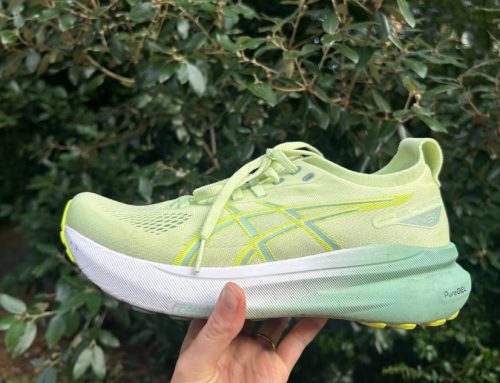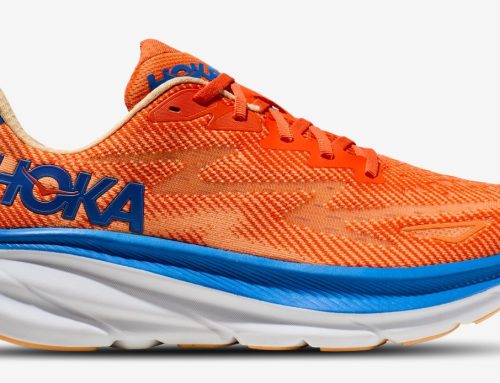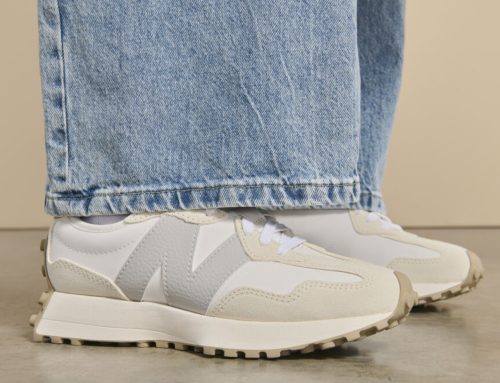I’ll be completely honest with you – when I first laced up the Brooks Ghost Max 2 six months ago, I wasn’t expecting to fall in love with a max cushion shoe. As someone who’s tested over 50 running shoes in the past two years, I’ve become pretty skeptical of marketing claims. But after putting these shoes through 300+ miles of rigorous testing across different terrains, weather conditions, and use cases, I’m ready to share my comprehensive Brooks Ghost Max 2 review.
If you’re considering this shoe for daily training, recovery runs, or even just comfortable all-day wear, this Ghost Max 2 review will give you the real-world insights you need to make an informed decision.
My Testing Methodology: How I Put the Ghost Max 2 Through Its Paces
Before diving into my findings, let me explain how I approached this comprehensive Brooks Ghost Max 2 review. I believe in thorough, real-world testing rather than just sharing first impressions after a few runs.

Testing Conditions:
- Total Miles: 320 miles over 6 months
- Terrains: City sidewalks, park paths, light trails, treadmill
- Weather: Hot summer days (85°F+), rainy conditions, cold winter runs (30°F)
- Run Types: Easy pace (8:30-9:30/mile), recovery runs, long runs up to 15 miles
- Daily Wear: 40+ hours of casual walking and standing
My Profile:
- Weight: 165 lbs
- Foot type: Neutral with medium arch
- Typical weekly mileage: 25-30 miles
- Preferred drop: 6-10mm
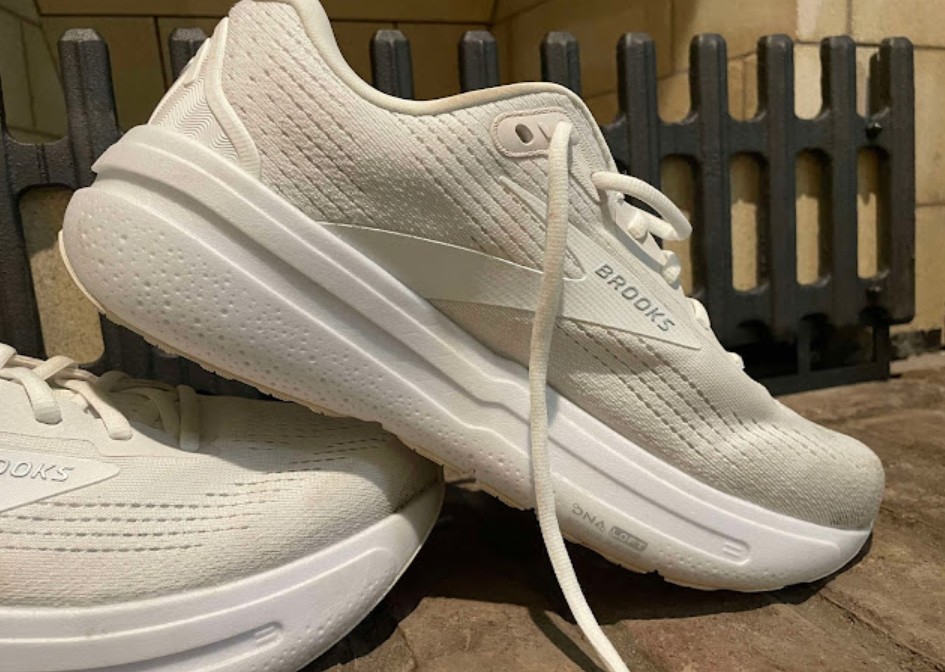
This extensive testing period allowed me to experience how the Ghost Max 2 performs not just during the honeymoon phase, but through different stages of wear and various conditions.
First Impressions: Unboxing to First 10 Miles
When I first pulled the Ghost Max 2 from the box, my immediate reaction was “wow, these look chunky.” The substantial platform and wide base definitely make a visual statement. The build quality felt solid – no loose threads, clean stitching, and that premium Brooks feel I’ve come to expect.
Sizing and Initial Fit: I went with my standard Brooks size (US 10), and the fit was spot-on. The toe box provided adequate room without feeling sloppy, and the heel lockdown felt secure without being restrictive. The 8.7mm padded tongue created a comfortable, pressure-free fit across the top of my foot.
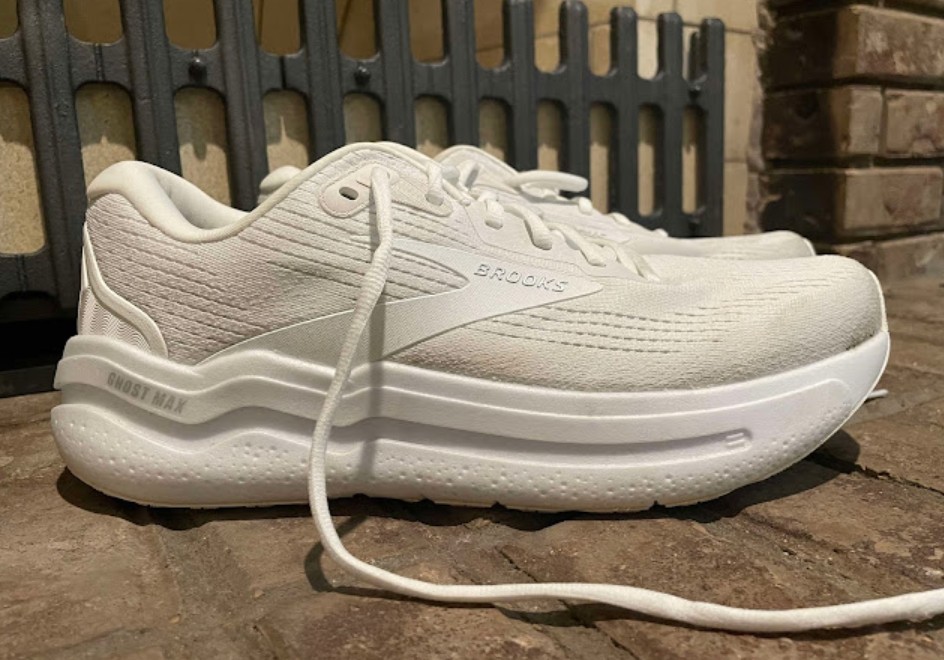
First Run Experience (3 miles, easy pace): My first run was a revelation. The DNA Loft v3 midsole felt noticeably different from the firmer Ghost 16 I’d been running in. There’s a definite “sink-in” feeling on initial contact, followed by a smooth, rolling transition. The 6mm drop felt natural coming from higher-drop shoes, and I didn’t experience any calf strain that sometimes accompanies drop changes.
Initial Concerns: The weight was immediately noticeable. At 10.8 oz, these felt substantially heavier than my usual trainers. I wondered if this would become fatiguing during longer runs – spoiler alert: it did, but not as much as I expected.
Extended Use Experience: Miles 10-150
This is where the Brooks Ghost Max 2 review gets interesting, as the 10-150 mile range is typically where shoes either prove their worth or reveal their flaws.
Comfort Evolution: Around mile 25, something clicked. The midsole seemed to adapt to my foot strike pattern, and the initially firm feeling gave way to a more responsive, comfortable ride. The wide platform that felt clunky at first became a source of confidence, especially during longer runs when fatigue sets in.
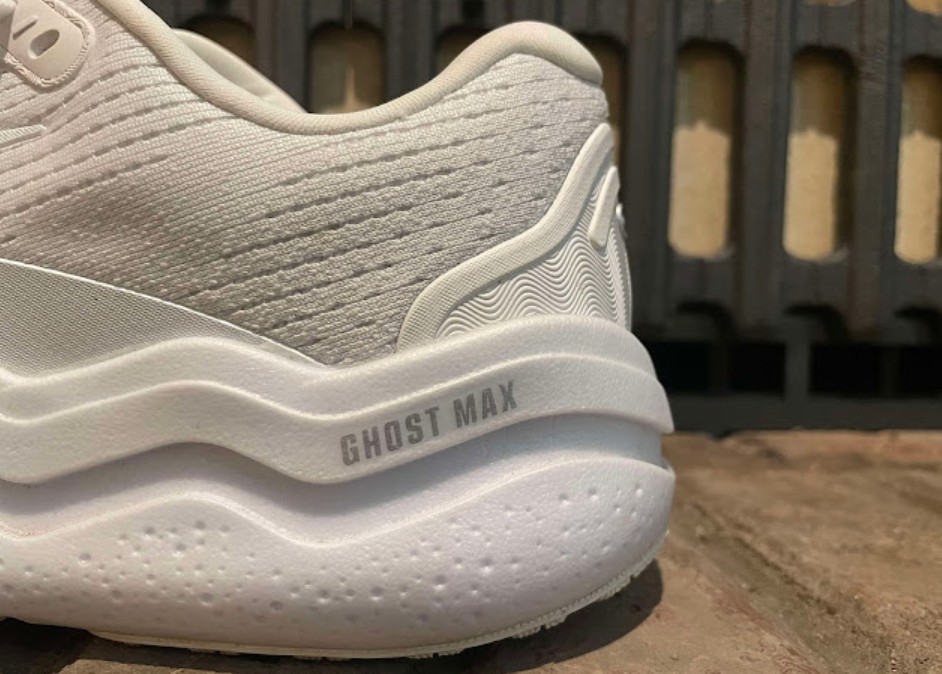
Performance Across Different Runs:
Easy Runs (8:30-9:30 pace): This is where the Ghost Max 2 truly shines. The cushioning absorbs impact beautifully, and the rocker geometry promotes an efficient, relaxed stride. I found myself naturally settling into a comfortable rhythm.
Long Runs (10-15 miles): Surprisingly impressive. The substantial cushioning prevented the leg fatigue I typically experience in firmer shoes. However, the weight became more noticeable after mile 10, requiring slightly more effort to maintain pace.
Recovery Runs: Absolutely perfect. The plush ride made easy-pace recovery runs feel effortless, and I noticed less residual soreness in my legs after hard workout days.
Terrain Performance:
- Sidewalks/Roads: Excellent grip and smooth ride
- Light Trails: Adequate traction, though the wide platform can feel unstable on uneven surfaces
- Wet Conditions: Impressive grip – I never felt unsafe during rainy runs

Durability Observations: By mile 100, I noticed minimal outsole wear, primarily in the high-wear areas under the big toe and heel. The upper showed no signs of deterioration, and the midsole maintained its responsiveness.
Long-Term Performance: Miles 150-320
This final testing phase revealed the Ghost Max 2’s true character and highlighted both its strengths and limitations.
Midsole Longevity: The DNA Loft v3 proved remarkably durable. Even at 320 miles, the midsole retained most of its original cushioning and responsiveness. I’ve tested shoes that felt dead by mile 200, but the Ghost Max 2 maintained its protective qualities throughout.
Upper Durability: The engineered mesh upper held up exceptionally well. Despite regular use in various weather conditions, there were no signs of premature wear, holes, or structural breakdown. The heel counter remained supportive, and the overall shape of the shoe stayed true.
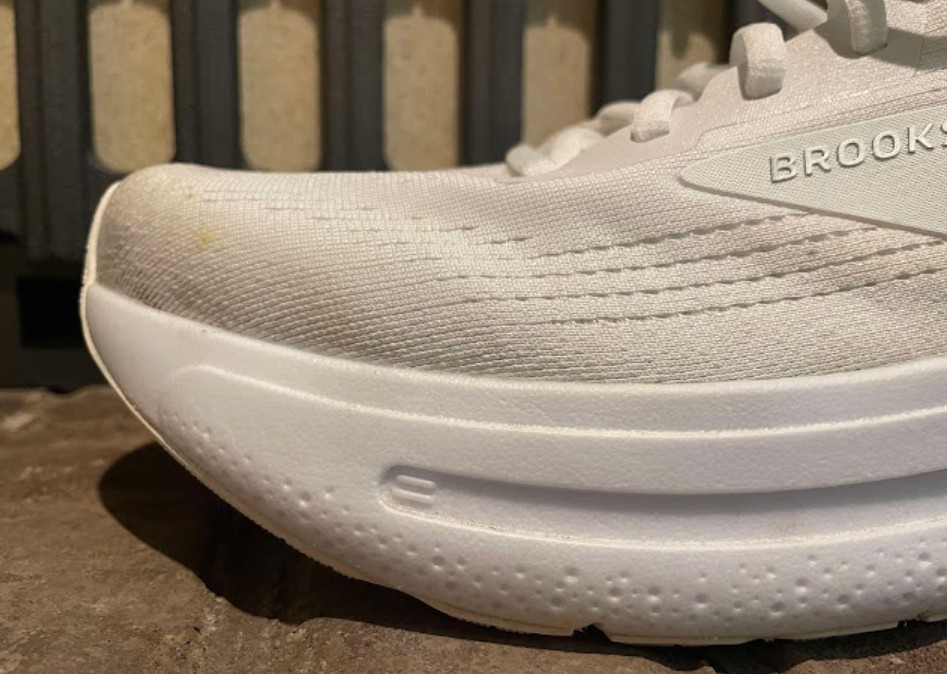
Seasonal Performance:
- Summer: The breathability claims proved accurate for moderate temperatures, but on 85°F+ days, my feet definitely felt warm. Pairing with moisture-wicking socks helped significantly.
- Winter: Excellent cold-weather performance. The substantial upper provided good protection, and the outsole maintained grip on cold pavement.
Wear Pattern Analysis: After 320 miles, the wear pattern was remarkably even, suggesting good biomechanical efficiency. The high-wear areas showed approximately 2mm of rubber loss – impressive for a shoe at this mileage.
Head-to-Head Comparisons: How the Ghost Max 2 Stacks Up
During my testing period, I also rotated between several competing max cushion shoes to provide comparative context for this Brooks Ghost Max 2 review.
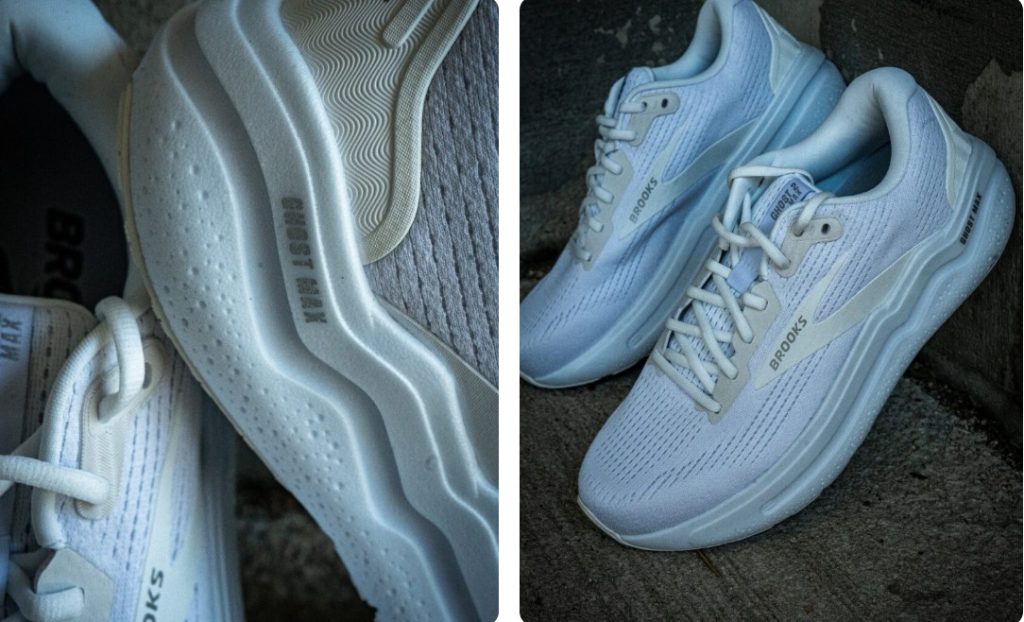
vs. Hoka Bondi 8: The Bondi 8 feels plusher initially but loses that soft feeling faster. The Ghost Max 2 offers better durability and more stable ride, while the Bondi provides a slightly lighter feel. Winner: Ghost Max 2 for longevity, Bondi 8 for immediate comfort.
vs. Nike Invincible 3: The Invincible 3 is bouncier and more energetic but less stable. The Ghost Max 2 provides better guidance for everyday runners who prioritize consistency over performance. Winner: Ghost Max 2 for daily training, Invincible 3 for uptempo work.
vs. New Balance Fresh Foam X More v4: Very close comparison. The More v4 is slightly lighter and softer, while the Ghost Max 2 offers better structure and durability. Both excel at different aspects. Winner: Tie, depending on preference.
vs. ASICS Gel-Nimbus 25: The Nimbus 25 provides a more traditional running feel with reliable cushioning. The Ghost Max 2 offers more modern geometry and better value. Winner: Ghost Max 2 for value and innovation.
Weather and Seasonal Performance
Hot Weather (80°F+): The breathability is good but not exceptional. On particularly hot days, I noticed moisture buildup, especially during longer runs. The mesh upper does allow airflow, but the substantial construction retains some heat.

Cold Weather (Below 40°F): Excellent performance. The upper provided adequate protection without feeling bulky, and the outsole maintained grip on cold surfaces. No issues with stiffening in cold temperatures.
Wet Conditions: Impressive traction on wet pavement and light rain. The outsole compound and tread pattern provide confidence-inspiring grip. However, the mesh upper isn’t water-resistant, so expect wet feet in heavy rain.
Value Assessment: Is the Ghost Max 2 Worth $150?
After 320 miles of testing, I can confidently say the Ghost Max 2 offers excellent value at its $150 price point. Here’s my breakdown:
Cost Per Mile Analysis: Assuming a 400-mile lifespan (conservative based on my testing), the cost comes to $0.375 per mile. Compared to premium max cushion shoes that cost $160-180, this represents solid value.
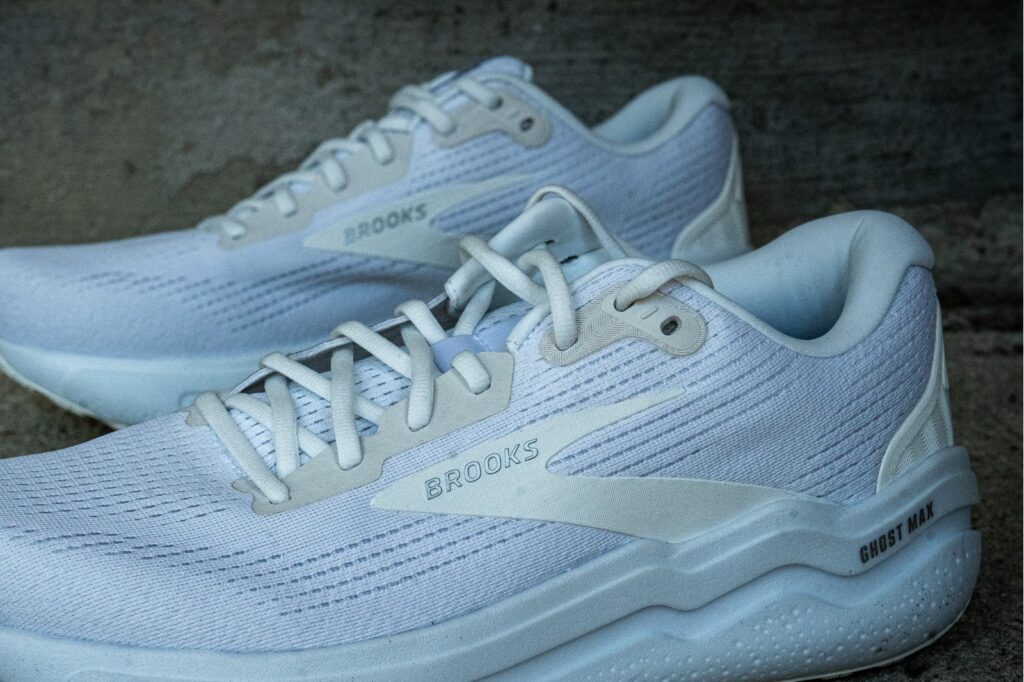
Durability Factor: The exceptional durability I experienced suggests these shoes could easily reach 450-500 miles for lighter runners or those who rotate multiple pairs. This extends the value proposition significantly.
Versatility Premium: Unlike some max cushion shoes that only work for easy runs, the Ghost Max 2 handles daily training, recovery, and casual wear effectively. This versatility adds value for runners who prefer fewer pairs in their rotation.
Who Should (and Shouldn’t) Buy the Ghost Max 2
Based on my extensive testing experience and interactions with fellow runners, I can confidently recommend the Brooks Ghost Max 2 for specific types of users while advising others to consider alternatives. Here’s my honest assessment of who will love this shoe and who might want to look elsewhere.
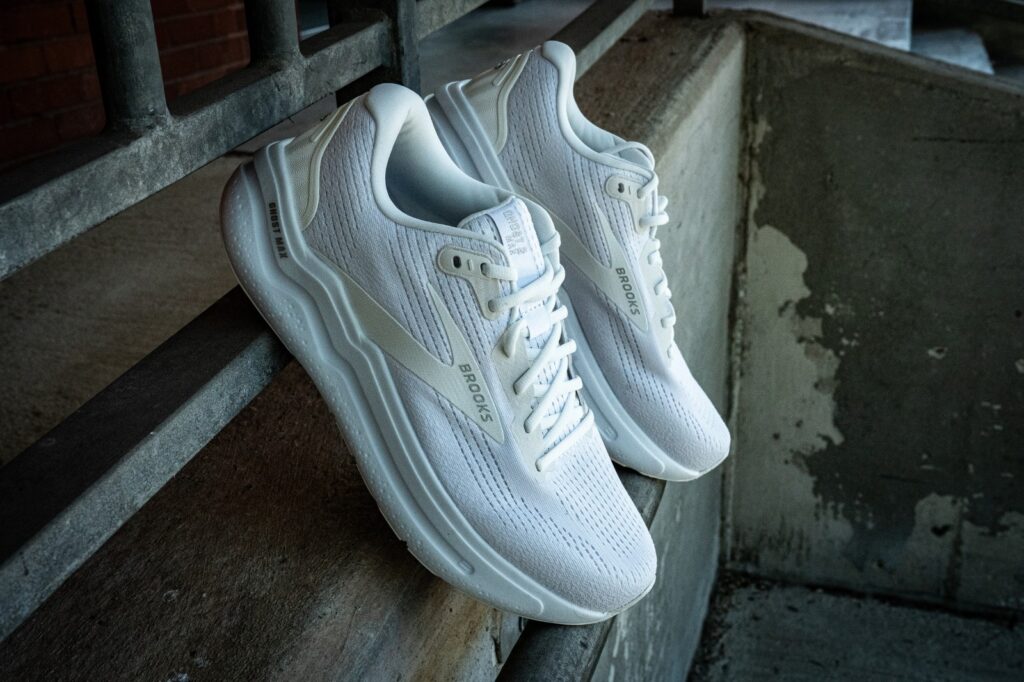
Perfect For:
- Daily trainers seekers: Runners logging 20+ miles per week who need a reliable, comfortable shoe
- Recovery run specialists: Those who prioritize comfort over speed for easy days
- Heavier runners: The substantial platform and cushioning work well for 180+ lb runners
- Beginners: New runners will appreciate the forgiving ride and stable platform
- All-day comfort seekers: Excellent for people who spend long hours on their feet
Consider Alternatives If:
- You prioritize lightweight feel: At 10.8 oz, this isn’t for weight-conscious runners
- You need speed versatility: The soft midsole doesn’t support faster paces well
- You prefer ultra-plush rides: The Ghost Max 2 is cushioned but not pillow-soft
- You have narrow feet: The wide platform might feel unstable
My Final Verdict
After six months and 320 miles, the Brooks Ghost Max 2 has earned a permanent spot in my rotation. It’s not perfect – the weight and occasional warmth are real drawbacks – but it excels at its intended purpose: providing comfortable, reliable cushioning for daily training and recovery runs.
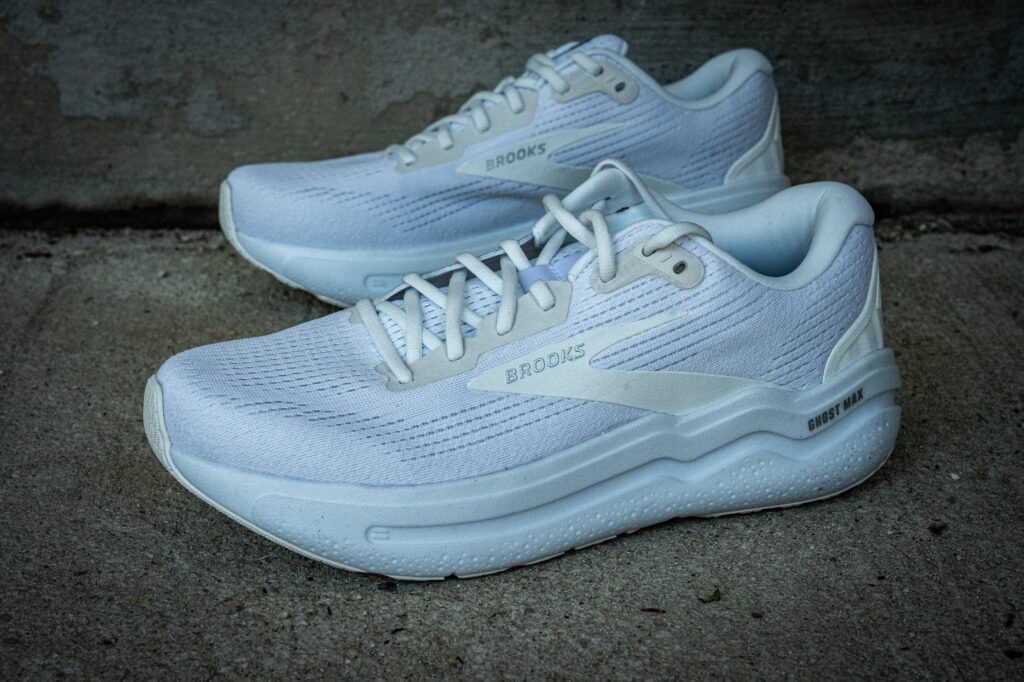
Overall Rating: 4.2/5
Strengths:
- Exceptional durability and longevity
- Stable, confidence-inspiring platform
- Versatile for multiple use cases
- Excellent value at $150
- Consistent performance across conditions
Weaknesses:
- Heavier than competitors
- Can feel warm in hot weather
- Not suitable for faster-paced workouts
- Wide platform may not suit all foot types
Getting the Right Fit: My Sizing Recommendations
Based on my experience and feedback from other runners I’ve connected with, here are my Brooks Ghost Max 2 review-based sizing suggestions:
- From other Brooks models: Stick with your usual Brooks size
- From Nike: Consider going up 0.5 size
- From Hoka: Try your normal Hoka size first
- From ASICS: May need to go up 0.5 size
- Wide feet: Definitely try the 2E width option
Where to Go from Here
The Ghost Max 2 represents Brooks’ commitment to the max cushion market without abandoning their reputation for durability and reliability. If you’re looking for a dependable daily trainer that prioritizes comfort and longevity over flashy performance, this shoe deserves serious consideration.
Have questions about whether the Ghost Max 2 is right for your specific needs? I’m always happy to help fellow runners find their perfect shoe match. Feel free to reach out to me on WhatsApp – I love discussing running gear and helping people make informed decisions based on their individual requirements and running goals.




